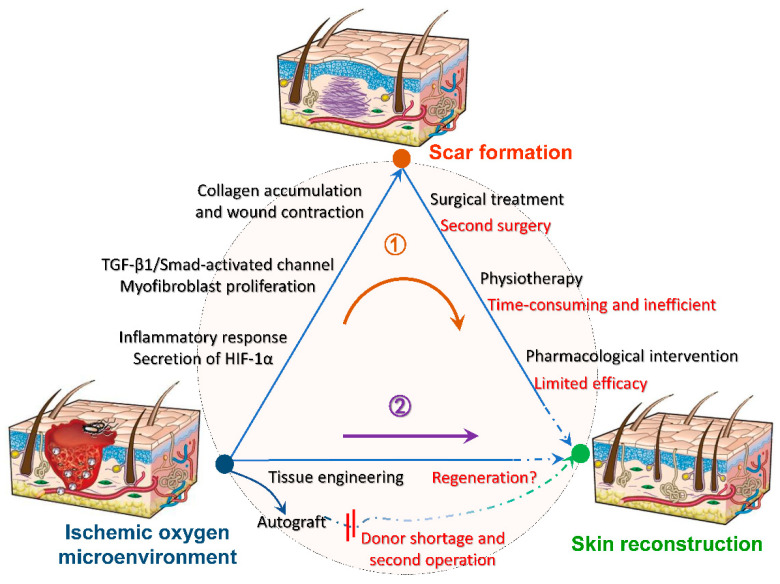Figure 3.
Mechanisms of oxygen-generating scaffolds to participate in trauma reconstruction. After hypoxia and anoxia of the damaged tissue, a series of reactions will contribute to scar formation, such as intense inflammatory response, conversion of fibroblasts to myofibers, excessive collagen deposition and wound contraction. Conventional treatments such as surgical excision are accompanied by limitations and incompleteness, making it difficult to heal the scar completely (route 1). Hence, we expect to intervene wound microenvironment by tissue engineering before scar formation to reduce or inhibit scar formation at the root (route 2). Reprinted with permission from [55]. Copyright (2008) Springer Nature.

